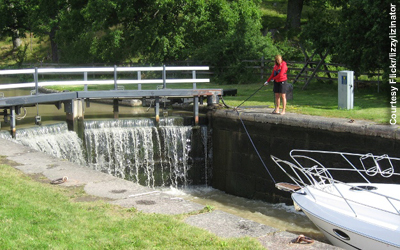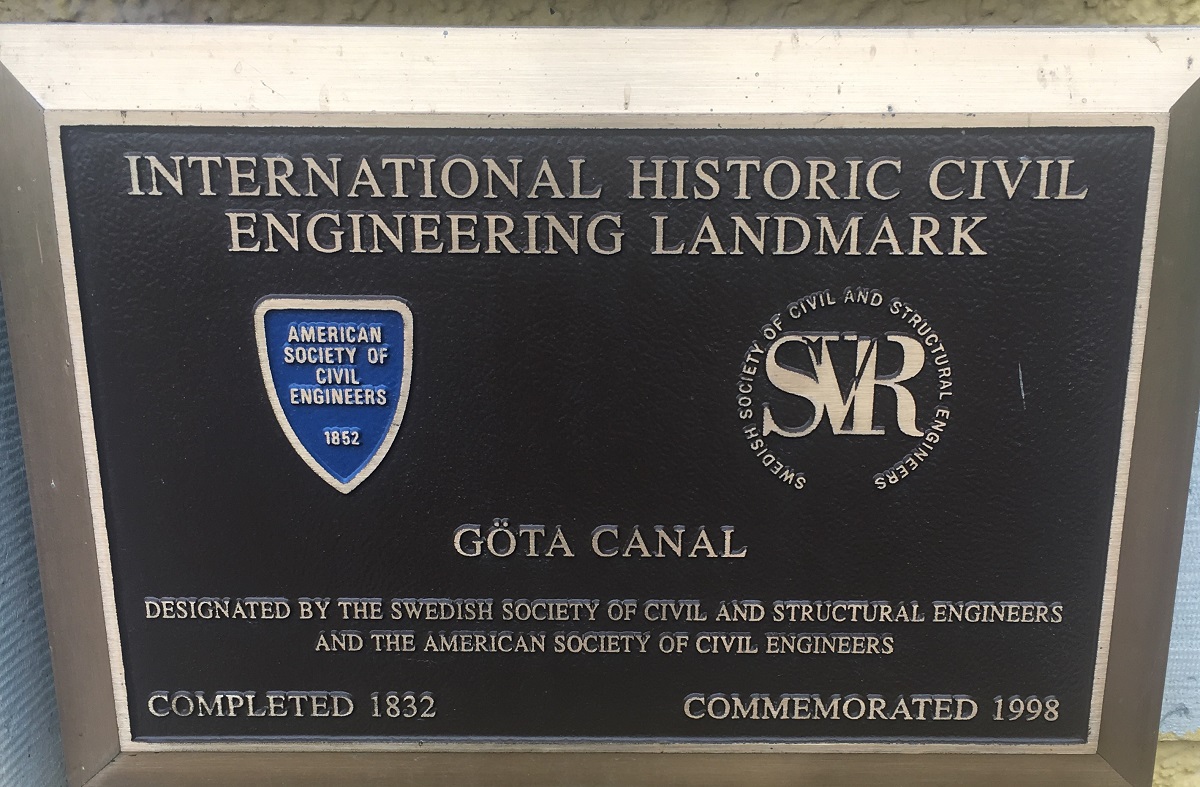Gota Canal
58 29 53.9 N
16 10 28.9 E

The Gota Canal is the biggest infrastructure project ever built in Sweden. The canal was dug by hand with shovels made of wood. It took over 22 years of 12-hour days - an estimated 12 million man-days of labor - to complete the project.
The Gota (pronounced yeu-ta) Canal is a 347-mile chain of lakes, locks, and rivers that provides a coast-to-coast connection from Stockholm to Gothenburg, Sweden. Construction of the canal was first considered during the reign of Gustaf Wasa in the early 1500's, but wouldn't become a reality for 300 years. In 1810, 60,000 soldiers under the command of former naval officer Baltzar von Platen began the construction effort.
Von Platen helped establish a primitive canal school, which lead to the creation of the Technological Institute near Stockholm in 1827, where leaders from mining, construction, and iron manufacturing industries received a theoretical education. Today, it is known as the Royal Institute of Technology and is one of four universities in Sweden to provide education in civil engineering.
The canal lost some of its importance later in the 19th century when railroads proved a more efficient means of transportation. The waterway became one of Sweden's most popular tourist routes, and today hosts several cruise lines.
Facts
- The Gota Canal is the biggest infrastructure project ever built in Sweden. The canal was dug by hand with shovels made of wood. It took over 22 years of 12-hour days. An estimated 12 million man-days of labor to complete the project.
- The first lock completed on the canal was built at Forsvik in 1813 and remains in use today.
- The canal features 65 bridges and 65 locks.
- Traveling the entire canal, which is 190 kilometers or about 120 miles, is a four-day journey.
- Today, over 4,000 boats a year traverse the canal, providing cruises and tours for thousands of visitors.
- Among those involved in the canal construction was John Ericsson, who later became known in Sweden as the "Father of Railroad Construction." He also patented the ship screw propeller and designed the U.S. Civil War-era USS Monitor for the Union Navy, which became one of history's most famous warships.


